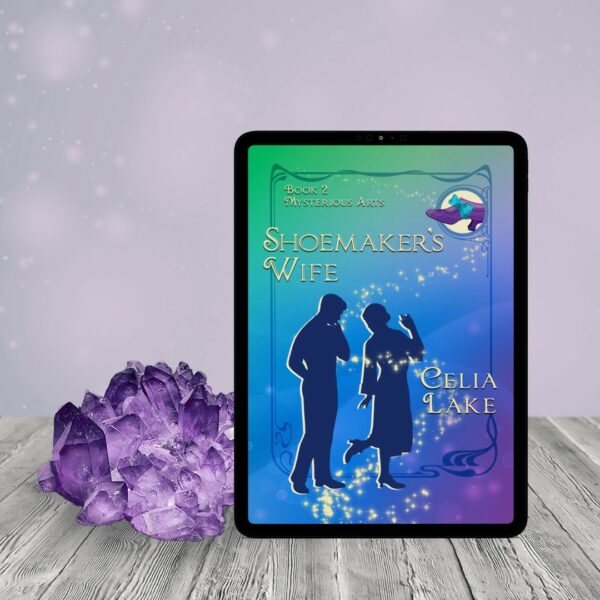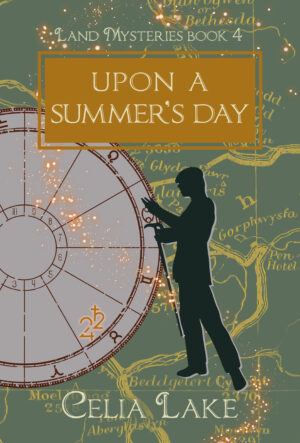Today’s Ideas to Book is about Shoemaker’s Wife. Set in 1920, at the tail end of men returning from the Great War, it’s about figuring out how to pick up – or begin again – and make a new way.

Returning from the war
When I started thinking through the ideas for the Mysterious Arts series, I realised two things. One is that I’d enjoyed writing the arranged marriage to love match romance of Alysoun and Richard in Pastiche. And then that I hadn’t written a romance between people who’d got married fast during the Great War and now had to figure out what they were doing after. Shoemaker’s Wife is the result.
Clara and Owen had good reasons for getting married. Certainly, it meant that Owen’s mother had company and help as she was progressively less well. It meant Clara had a little more stability, even if money was tight. And they did truly fall in love at a time both of them could use a bit of joy.
But a bit of joy isn’t enough for a lasting romance or a good marriage, is it? That’s where the book comes in.
I also wanted to explore what it was like for someone without skills that were valued in the post-War economy to come back. Owen was demobbed very late in the process, as some people were. People who were going back to needed professions had priority. (As, of course, did people who could pull a few strings). That meant that by the time Owen returns in the summer of 1920, jobs are scarce and there aren’t a lot of options. Inflation is about to go up and up and up, and what money they have won’t go far.
It’s even worse for Owen, because of the rise of manufacturing. Albion maintains handcrafted clothing and shoes much longer than the non-magical community, because magical crafting allows for useful options. (Protective magic woven into the garment, charms for the best fit and most comfort, etc.) On the other hand, when money’s tight, and factory-made shoes or ready-to-wear clothes are an option, those might be what you get.
Theatre
I’ve got a long-running relationship to the theatre, but I come by it a little oddly. My father was a theatre professor until his death. I grew up occasionally chipping in when he needed a small child in a college production. (Most notably, he combined the three children in Henrik Ibsen’s A Doll’s House into one, and I was the one. It’s a lot easier to manage children in a production if the child is yours and you can schedule accordingly.)
I have a lot of delightful memories of that production. I spent a lot of time backstage with the college students teaching me how to play cards and showing me the wonders of the costume shop. And I adored my main costume for that – a green and red plaid dress and a gloriously embroidered pinafore. It also got it firmly into my head how much of a successful production is on stage, and just how much is what’s going on behind the scenes.
When Owen gets hired by the New Ricardian, he finds that out too.
Theatre history in Albion
I loved getting to explore what a theatre in Trellech might look like in Shoemaker’s Wife, and how they’d go about paying their bills. Cinema’s still coming in. Trellech has a substantial population who might go to the theatre. But they’re not going to want to have the same show running for months at a time. On the other hand, that means constant shifts for the actors, more akin to a repertory schedule.
I also had a tremendous amount of fun (and, erm, effort) figuring out where theatre in Albion diverged from what we know of theatre history. Restoration comedies, for example, are a lot less relevant when you sort of stopped caring about the monarchy so much a couple of centuries earlier. The same thing with many satires – Albion cares about different scandals and problems.
And of course, the play that Albion treats with caution out of Shakepeare’s works would be Midsummer Night’s Dream, not the Scottish play. (See, I said I was a child of the theatre, even typing the name makes me shiver. For those who don’t know, there’s a longstanding superstition about saying the name of that play in a theatre.)
I do hope to come back to more theatre at some point. The New Ricardian (and Owen) do make an appearance in Facets of the Bench (out in August 2024).
Connections in Trellech
Finally, I wanted a chance to explore Trellech a bit more. (And again, we’ll have even more Trellech coming in Facets of the Bench.)
Both Owen and Clara grew up there, they’re making their homes there. I loved working through the details of Clara’s work in the apothecary shop. Clara is someone who wants the shop to run smoothly and succeed. But unlike a number of my characters, Clara isn’t skilled magically herself (and hasn’t had the opportunity to do a lot of training). She’s relying on her aunt to make items, and she puts all her energy into the bookkeeping and managing inventory.
Owen also has connections – his apprentice master, to start – but that’s not always as much of a help as he’d like. Instead, he’s got to figure out what’s going on. When he’s directed to Golshan, a whole new set of opportunities unfurl.
I did love the chance to get Golshan, Dilly, and Seth into this book. I’d had a couple of hopeful requests from readers for a bit more of the three of them. (You can find the relevant romance in Casting Nasturtiums, one of the novellas in the Winter’s Charms collection). Shoemaker’s Wife lets us see them about nine to twelve months after the end of that novella. Even better, we get to see the way they’re settling into being usefully helpful to people who could use a hand.
Check out Shoemaker’s Wife if any of this intrigues! And you’ll be seeing a lot more of Griffin in Facets of the Bench out in August 2024.

